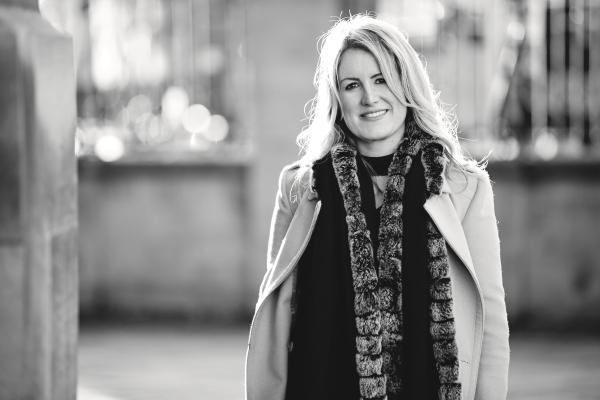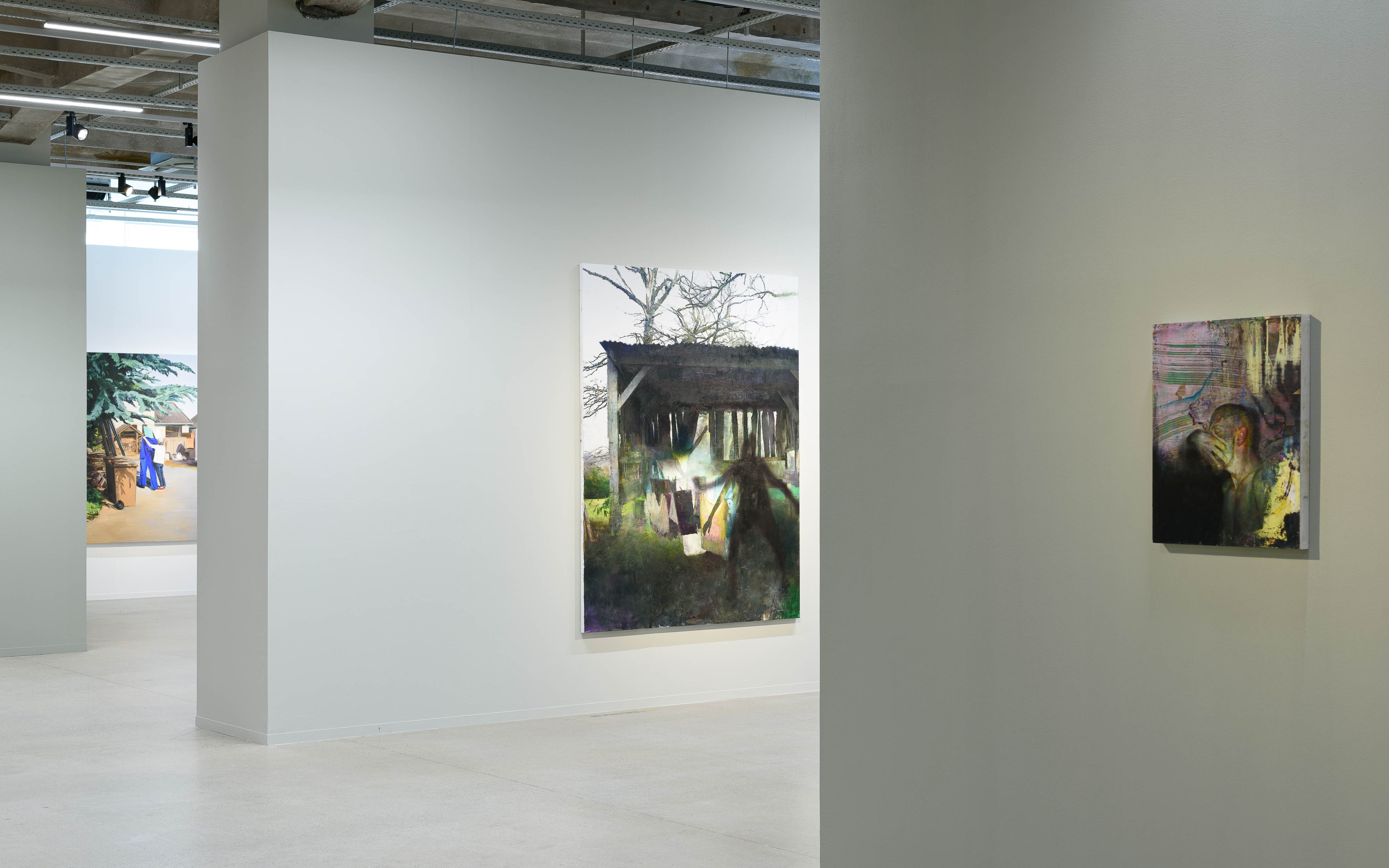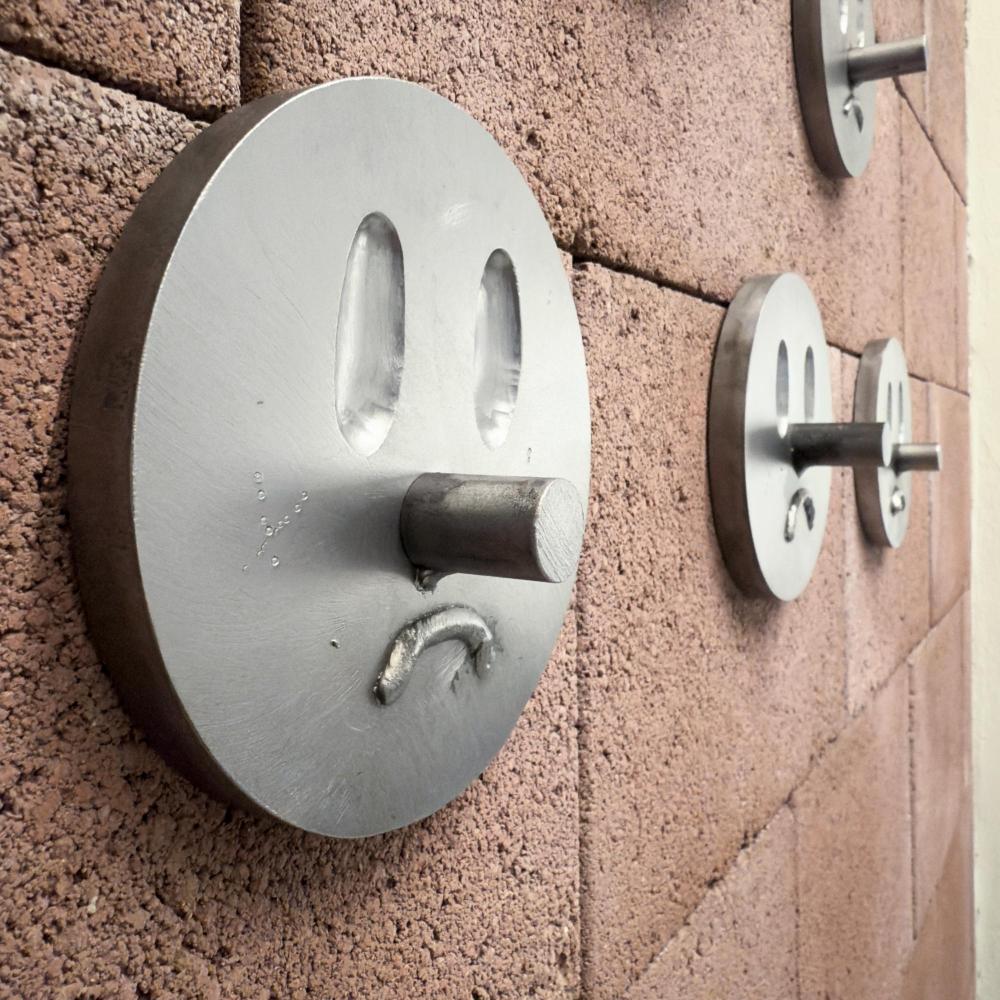
Jane Neal has established a reputation as a leading expert on the contemporary art scene in Eastern Europe and has curated critically acclaimed exhibitions in cities around the world, including Amsterdam, Berlin, Budapest, Copenhagen, Cluj, Dubai, London, Los Angeles, Milan, Mumbai, New York, Prague and Zurich. She was the first international curator to collaborate with artists, some of whom are leading figures in the contemporary art world, notably Adrian Ghenie - now considered one of the most sought-after artists in the world. In the Czech Republic, Jane Neal has already participated in several exhibitions, including Disturbed Imagination at the Gallery of Fine Arts in Ostrava and Martin Eder's first domestic solo exhibition at the DSC Gallery in Prague. She has already curated the most interesting contemporary German painting in the Telegraph in the form of German Painting Now. Now you can enjoy the New Positions in British Painting exhibition devoted to different positions and approaches in British figurative painting, on the occasion of which this interview was conducted.
You studied painting at the Ruskin School of Art in Oxford at a time when abstract expression prevailed over figurative. What was your painting training like? I suppose as a lover of figurative painting, this must have been a slightly frustrating period for you?
It wasn’t so much that abstraction was a dominant force, as painting in general had to have an apologetic to justify its existence. I kept being told that technique and the craft of painting weren’t important and that it was the concept that mattered - but I never believed that this was the case. For me - yes - ideas are of course important and one should move forwards and present new ideas and not create a pastiche of the past or be retrograde - but technique and proficiency - the understanding of one’s medium and how to best to use it - were also vital to the creation of a successful art work - there should be a balance. My own training at the Ruskin was traditional in terms of being taught (well) how to draw - there were compulsory life drawing classes and we had to study anatomy and visit the dissection room to look at and draw the cadavers and learn the skeleton and surface musculature of the human form - but the degree course was split between an engagement with this, art history and the development of each student’s own contemporary art practice. In the first year everyone had to spend time in both the sculpture, and painting studios and only from the second year on could they specialise in their chosen discipline - if indeed they decided to specialise in one particular direction. It most senses it was quite progressive. I was frustrated when I emerged from art school mainly because there wasn’t really a context for figurative painting that wasn’t ironic or had some other tag attached to it. People kept telling me painting was dead and photography, new media or installation art were the way forwards. I never believed them and figured it was just a phase. There is of course a place for art forms other than painting - but if anything, photography is the art medium that has struggled the most since the digital age. I’d say that painting has massively benefited from the arrival of new technologies such as Adobe photoshop and artists now have access to an incredible data base of images from which to draw thanks to Google and other search engines. Painting has revitalised and its wonderful plasticity has absorbed the exciting technological developments of our time.
As a student you received a scholarship from your college in 2001 and spent some time in Prague. You returned to Prague as a young journalist in 2003 and again in 2005 for the Prague Biennial, where you met artists from different parts of Europe, and so your travels continued to Budapest, Cluj and Berlin. Did you ever feel a language barrier in these collaborations? Why did you decide to deal with parts of Central and Eastern Europe?
This is a long story! Cut short - before I did my fine art degree, I studied medieval history with a modern historian called Roger Moorhouse who was writing a book at the time called ‘Microcosm’. It looked at what happened in Wrocław in Silesia as a microcosm for what happened in so many parts of Europe. It was the early 90s, the wall had just come down and Eastern Europe had opened up to the west and vice versa. I was fascinated. I became even more entranced when I realised what a wealth of artistic talent there was and how well schooled the artists were as they actually knew how to paint - and most of them had a good grounding in conceptual art too (that they’d gone out and found out about for themselves. I was hooked. The rest just evolved quite organically and suddenly I found myself working often in the region with artists from this context. I met two of the Romanian artists I went on to work with in Prague in 2005 - Victor Man and Adrian Ghenie. They spoke excellent English - as do nearly all the artists I meet. I’m fortunate that so many people speak such good English. I speak French and understand quite a lot of the Latin languages (including Romanian), but the Slavic languages and German are harder for me!
You have extensive experience of artistic developments in the peripheries of Europe - which city do you consider to be the "next artistic powerhouse"?
I don’t see it like this. The art world is so globally accessible now - we can go anywhere we like - virtually at least - and there are some great galleries in all sorts of unexpected places. I believe if you do good things, people will come. It’s all about energy - if you invest and believe absolutely in what you’re doing and pour your heart and soul (and some money) into things - while never losing your integrity - wonderful things will happen.
You work as a freelance curator, but in the past you have held the role of director of the Calvert 22 Foundation in London. What are the advantages and disadvantages of working in an institution compared to freelance work?
We did some great shows while I was at Calvert 22 that I’m very proud of. I enjoy my independence though. It’s a journey, isn’t it? It was important for me to be there at that time, and to do the teaching I did and to write the articles I wrote. Everyone needs to create a platform, a profile so people know who they are, whether they can trust their vision, their eye, their decisions. After this it’s a lot easier to work independently because you’re a known quantity. I value my independence and being able to choose what I work on and who I work with. It sits well with me now. I feel I put the work in so that I could do this, but I’ve enjoyed it all to be honest. It’s been quite an adventurous and at times tumultuous ride!
You have exhibited in a number of different cities and cultural environments. Do you think that the place, its visuality and effect plays a fundamental role in the artist's work? I'm referring here to terms such as "Leipzig School", "Romanian School" and so on - do you think that the approach to forming a terminology according to the geographical distribution of each endeavour is ideal?
This is easy to answer - no! It’s not like ideal at all and it’s lazy to just label people like this. It’s convenient to encapsulate things but life and art aren’t so easily boxed in.

You have prepared an exhibition of British painting at the Telegraph Gallery. However, this is not the first time you have collaborated with the Telegraph and its owner Robert Runták. On what occasion did you meet and establish your future collaboration?
I met Robert many years ago now - I think maybe 8 or 9? through my friend Mark Sanders. Robert was interested to see more European painters so I introduced him to some wonderful artists.
The exhibition features five artists from the contemporary British scene - Tom Anholt, Jessie Makinson, Justin Mortimer, David Brian Smith and Caroline Walker. What led you to choose these artists?
The exhibition is entitled ‘New Positions in British Painting’ and the exhibition hopes to present examples of these through the artists I selected. They are all very different but have some interesting cross over points, parallels or distinctly opposite approaches at times - some are creating utopian visions, drawing from magical realism and creating dream like narratives, others are focusing on the female protagonist, borrowing from reprographic traditions or looking at movements from the early 20 century, and others are taking a darker, more dystopian view of the world. Hopefully the combination is interesting, insightful and unexpected at times too for the Czech audience.
Which other cities outside London are doing well in the UK?
It depends what you mean by well? Artistically Manchester, Bristol, Leeds, Glasgow have interesting things going on - but I’m sure there are more.
What do you think about the contemporary Czech art scene? Can you tell us which names you consider to be of high quality and distinctive?
There are many wonderful artists working in the Czech scene - Daniel Pitín, Josef Bolf, Jakub Matuška, Adéla Janská, Adam Štech, Krištof Kintera, Jan Hísek, Matouš Háša, Rony Plesl - just for starters… I could go on and on!
And finally, we would like to know what emotions do abstract works evoke in you, since you have been surrounded by mainly figurative painting for years?
Don’t get me wrong - some of my favourite artists have made abstract works - Mark Rothko, Howard Hodgkin, Frank Stella, Victor Vasarely - to name just a small handful - a good painting is a good painting. In the end everything comes down to a series of abstract marks - even figurative painting when you think about it is just a series of marks assembled together in a way that makes sense. The best art should challenge you intellectually - yes - but even more so it should engender a visceral response - it should be like a punch to the stomach, a shock, a surprise, or a transcendental experience - it should transport you - even momentarily - to another realm. Whatever it is, whomever made it - that’s not the point - when it’s good, it’s good and you know it.
Portrait photo: Louise Mills
By Barbora Křížová, Inka Ličková / Telegraph Gallery







